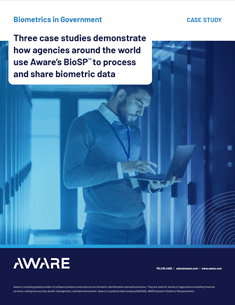Enhancing Border Efficiency with Remote Identity Verification
June 1, 2023 | 4 minute read
In our increasingly connected world, the need for secure and efficient border control measures is paramount. Remote identity verification has emerged as a transformative solution, revolutionizing the way we process travelers at border crossings. By leveraging advanced technologies and streamlined processes, remote identity verification not only enhances security but also significantly improves border efficiency.
This blog will examine the advantages and effects of remote identity verification. It will also explore its role in forming the future of border control.
Enhancing Security with Remote Identity Verification
Border security is a top priority for any nation, and remote identity verification plays a crucial role in strengthening this aspect. Advanced biometric authentication systems, such as facial recognition and fingerprint scanning, enable authorities to accurately verify a traveler’s identity remotely. This technology eliminates the reliance on physical documents that can be forged or stolen.
Security officials can use biometric data to cross-reference with national and international databases. This enables them to quickly identify individuals with criminal records or those on watchlists. This ensures that only authorized and law-abiding travelers gain entry.
Improving Efficiency
Remote identity verification has many advantages. One of them is the ability to make border control more efficient. This leads to both time and cost savings. Traditional border crossings often involve long queues, manual document checks, and extensive paperwork, leading to delays and inefficiencies.
With the introduction of biometric facial comparison, the way travelers verify their identities has been revolutionized. This innovative process takes place when the individuals are already required to present their documents as mandated by law. In the instance of Peace Bridge in Buffalo, NY, a traveler arrives at the pedestrian border crossing where they must simply pause for a quick photo, which is then reviewed and cross-checked by a Customers and Border Protection (CBP) officer using the government’s database. In just seconds, the traveler’s new photo can be compared to the one on their document. This streamlined and secure facial comparison process ensures a hassle-free experience and adds an extra layer of confidence and efficiency to modern travel systems.
Facilitating Seamless Travel
Remote identity verification also enables seamless travel experiences for legitimate travelers. With electronic pre-verification, individuals can benefit from expedited processing and reduced interaction with border officials.
This enhances the overall travel experience, particularly for frequent travelers, business professionals, and tourists. Minimizing the time spent on administrative tasks allows travelers to focus on their journey. This ensures that they make the most of their time at their destination. Enjoyment is the key to a successful trip.
Remote identity verification is convenient and efficient. This contributes to positive perceptions of border control processes. As a result, increased tourism is encouraged, and international cooperation is fostered.
Challenges and Considerations
Remote identity verification offers many advantages. However, there are worries about privacy and data security.
To ease those concerns, it’s important to note that Aware is a top provider of biometric software and solutions for visitor screening and border management. This is an area we’re confident in. Not only do we ensure personal information is handled responsibly and securely, but we focus on national security and protecting citizens’ freedoms.
With a decades long commitment to research and development, we proudly consider ourselves experts in the fields of biometrics, security, and compliance – this commitment has garnered us the opportunity to work with more than 80 government agencies.
Biometric technology needs to be continuously improved to reduce false matches and rejections. For this, there must be a collaboration between governments, technology providers, and privacy advocates. This collaboration is essential to achieve a balance between security, efficiency, and privacy. To learn more about how Aware can support your border management team, browse our solutions or contact us for additional insight.
The Future of Border Control
As technology continues to advance, the potential for remote identity verification at border crossings is immense. Integration with artificial intelligence and machine learning algorithms can further enhance the accuracy and efficiency of identity verification processes. Additionally, interoperability between different countries’ systems can facilitate smoother international travel, reducing the administrative burden on both travelers and border officials. The future holds exciting possibilities for border control, with remote identity verification serving as a cornerstone for secure and efficient travel.
Remote identity verification has emerged as a game-changer in border control, offering enhanced security measures and improved efficiency. By leveraging advanced biometric authentication and streamlined processes, this technology transforms the way we process travelers at border crossings. While challenges exist, the continuous refinement of systems and collaboration among stakeholders will help address concerns. Remote identity verification represents a bright future for border control, paving the way for seamless and secure international travel.
